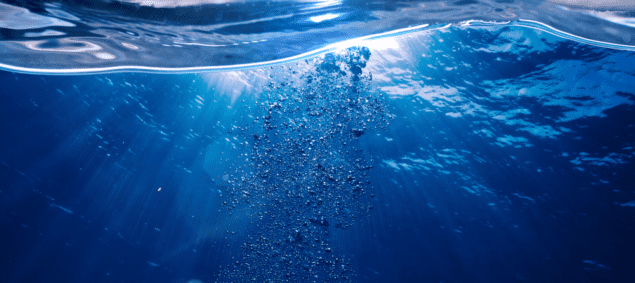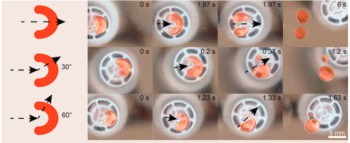
More evidence that supercooled water exists in two distinct liquid phases has surfaced in experiments done by Austen Angell and colleagues at Arizona State University (ASU) and the University of Amsterdam. The idea of two liquid phases was proposed 25 years ago to explain the thermodynamic properties of supercooled water, but physicists had been unable to cool water to low enough temperatures to observe a transition between the phases.
The physics of water is a rich and active field of research because the substance has many poorly-understood physical properties that do not fit the mould of a normal liquid. “Water is a rather unique liquid,” says Angell. For instance, liquid water exhibits negative thermal expansion below 4 °C, meaning that its volume expands as it cools instead of contracting like most liquids.
One hotly-debated issue for scientists studying water is the “second critical point hypothesis”. This suggests that at low temperatures liquid water makes a transition from its familiar liquid phase to a lower density phase that is also more viscous.
Adding antifreeze
Angel and colleagues study supercooled water by adding the antifreeze hydrazinium trifluoracetate to pure water to create a water-like liquid that can be chilled to temperatures below -90 °C without freezing. This was necessary because pure water can only be supercooled to around -40 °C and the team believed that the transition occurred well below this temperature.
A few years ago, Angell and his ASU colleague Zuofeng Zhao noticed that when the solution was cooled to about -80 °C it suddenly gave off heat – something that is consistent with a phase transition. The new liquid was much more viscous than water and Angell and Zhao could reverse the transition by increasing the temperature. What they could not do at the time was to confirm that the water molecules in the new phase are arranged differently than in conventional liquid water.
Now, the ASU researchers have teamed up with Sander Woutersen and colleagues in Amsterdam to probe the structure of the new phase using infrared spectroscopy. They found that the lower density liquid phase has stronger and more ordered hydrogen bonds around the water molecules, which make the liquid stiffer and therefore more viscous. Further analysis revealed that the hydrogen bonding patterns involved in the transition between the two liquid phases are analogous to those observed in a different transition between two glassy states of pure water ice.
Purity issues
While this lends credence to the idea that results from the study expose the hidden liquid phase of pure water, the fact that the liquid is not pure water was always likely to lead some to question whether the antifreeze could have some influence on the results.

Supercooled water could exist in two liquid phases
“The work is certainly very interesting,” says Alan Soper of the UK’s Rutherford Appleton Laboratory. “But liquid–liquid transitions are often observed in mixed systems, so how this relates to the properties of pure water I am not clear.” Soper also questions the use of infrared measurements to infer what is happening at the molecular level, when there might be other explanations for the data.
Yet evidence is mounting that a liquid–liquid transition may indeed occur in supercooled water. Earlier this year researchers in Sweden, Japan and Korea used ultrafast X-ray scattering to measure the properties of -44 °C supercooled water droplets and concluded that supercooled water could exist in two different liquid phases with different densities.
Angell and colleagues describe their latest work in Science.



